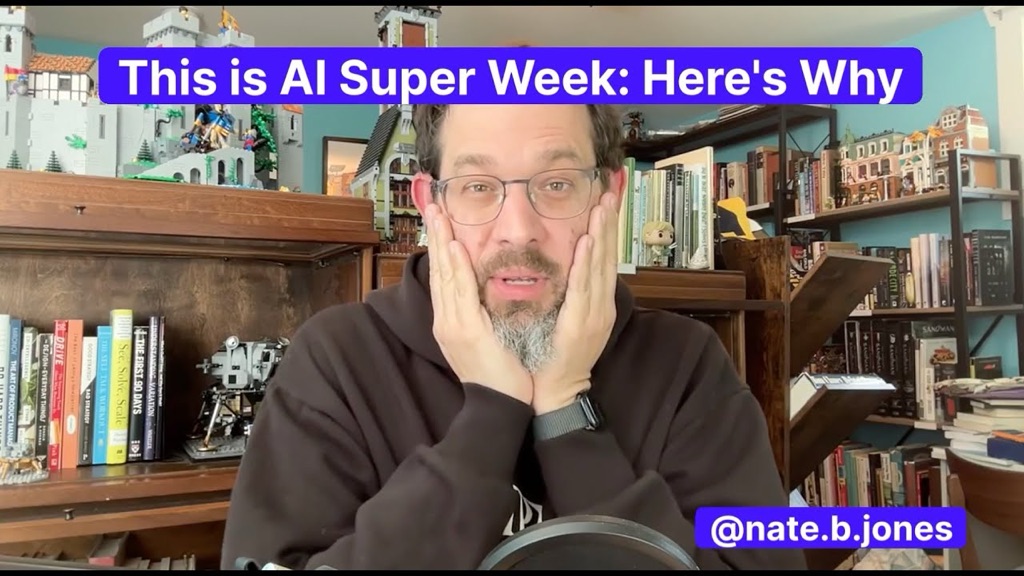 |
|
|
|
The YouTube video at the provided link, titled “The Truth About Gen Z Entrepreneurs,” is a 26-minute episode of the “Future of Work” series by The Standard, featuring host Paul Wolfe and guest Kahlil Greene, a Gen Z historian and entrepreneur known as the “Gen Z Historian” on TikTok. The discussion explores the entrepreneurial landscape for Generation Z, with a focus on how young entrepreneurs, particularly those in their early 20s, navigate opportunities and challenges in the modern economy. While the video does not explicitly limit its scope to 20- to 22-year-old college-age entrepreneurs, it provides insights into the broader Gen Z entrepreneurial experience, which can be applied to this demographic. Below, I transcribe key points from the video relevant to the impacts on college-age entrepreneurs and expand on these impacts with specific implications for 20- to 22-year-olds, drawing on the video’s content and contextual analysis.
### Transcription of Key Points Relevant to College-Age Entrepreneurs
Below are paraphrased and direct excerpts from the video, focusing on themes and statements that relate to the entrepreneurial impacts on young Gen Z individuals, particularly those in the college-age range of 20 to 22. Timestamps are included for reference.
– **Introduction to Gen Z Entrepreneurship (0:00–2:30)**:
– Paul Wolfe introduces the topic, noting that Gen Z is redefining entrepreneurship by leveraging digital platforms and social media. He highlights Kahlil Greene’s success as a TikTok creator who turned his passion for history into a business, reaching millions with educational content.
– Greene explains that Gen Z entrepreneurs are “born into a digital age,” with access to tools like social media that allow them to start businesses with minimal upfront costs compared to traditional models.
– **Low Barrier to Entry for Digital Businesses (4:15–6:00)**:
– Greene: “You don’t need a lot of money to start a business anymore. Back in the day, you needed a storefront, inventory, employees. Now, you can start a business from your phone with just a Wi-Fi connection and some creativity.”
– He cites examples like content creation, dropshipping, and digital marketing, where young people can build brands using platforms like TikTok, Instagram, or YouTube.
– **Side Hustles as Entrepreneurial Gateways (7:10–8:45)**:
– Greene discusses how Gen Z often starts with side hustles while in school or working other jobs. “A lot of us are doing this on the side—maybe you’re making TikToks during class breaks or selling digital products on Etsy after homework.”
– He emphasizes that these side hustles can scale into full businesses, as they allow experimentation without the risk of quitting a job or dropping out of college.
– **Economic Pressures and Motivation (10:20–12:30)**:
– Greene: “Gen Z is entrepreneurial because we have to be. We’re coming out of college with crazy debt, and jobs aren’t paying what they used to. So we’re like, ‘Why not try to make our own money?’”
– He notes that economic uncertainty, including inflation and a competitive job market, pushes young people to create their own income streams.
– **Social Media as a Double-Edged Sword (14:00–16:50)**:
– Greene explains that social media platforms are both an opportunity and a challenge. “You can go viral and get a million followers overnight, but you’re also competing with everyone else trying to do the same thing.”
– He mentions the pressure to constantly produce content and stay relevant, which can be mentally taxing for young entrepreneurs managing school and personal lives.
– **Mental Health and Burnout (18:30–20:15)**:
– Greene: “The hustle culture is real, and it hits hard when you’re young. You’re trying to balance school, maybe a part-time job, and then you’re up at 2 a.m. editing videos or answering customer emails.”
– He acknowledges that college-age entrepreneurs often face burnout due to the expectation of always being “on” in the digital space.
– **Community and Collaboration (22:00–24:00)**:
– Greene highlights how Gen Z entrepreneurs build communities online, collaborating with peers to grow their businesses. “We’re not just selling stuff; we’re creating communities around our brands, and that’s what makes it sustainable.”
– He gives examples of college students forming group chats or Discord servers to share tips on monetizing content or navigating platform algorithms.
– **Future Outlook (24:30–26:00)**:
– Greene is optimistic about Gen Z’s entrepreneurial future, stating, “We’re just getting started. The tools are only going to get better, and we’re going to keep finding new ways to make money and make an impact.”
– He encourages young entrepreneurs to focus on authenticity and consistency, as these traits resonate with Gen Z audiences.
### Expanded Impacts on College-Age Entrepreneurs (20–22 Years Old)
Using the video’s insights, I’ve expanded on the specific impacts for 20- to 22-year-old college-age entrepreneurs, tailoring the analysis to their unique circumstances as students navigating higher education, financial pressures, and early career development. Each impact is grounded in the video’s content and supplemented with contextual implications for this demographic.
1. **Low Barrier to Entry Enables Early Experimentation**:
– **Video Insight**: Greene emphasizes that digital platforms reduce the need for significant capital, allowing young people to start businesses with just a smartphone and internet access.
– **Impact on 20- to 22-Year-Olds**: College students can experiment with entrepreneurship without the financial risks associated with traditional businesses. For example, a 21-year-old marketing major might start a TikTok account offering study tips, monetizing it through sponsorships or digital products like e-books. This low-risk environment allows students to test ideas while still enrolled in school, building skills and confidence.
– **Specific Implication**: The ability to start small (e.g., a side hustle selling digital art on Etsy) means students can balance entrepreneurship with coursework, gaining practical experience that enhances resumes or provides income to offset tuition costs. However, the ease of entry also creates a crowded market, requiring unique branding to stand out.
2. **Side Hustles as a Flexible Entrepreneurial Path**:
– **Video Insight**: Greene notes that many Gen Z entrepreneurs begin with side hustles, which can scale into full businesses, offering flexibility for those with busy schedules.
– **Impact on 20- to 22-Year-Olds**: College students, often juggling classes, part-time jobs, and social lives, find side hustles like freelance graphic design or content creation ideal. A 20-year-old computer science student might code websites for small businesses on Upwork during weekends, earning extra income without committing to a full-time venture.
– **Specific Implication**: Side hustles provide financial cushioning against student debt (average U.S. student loan debt is around $30,000) and allow students to explore passions that may not align with their majors. However, time management becomes critical, as overcommitment can lead to academic or personal stress.
3. **Economic Pressures Drive Entrepreneurial Motivation**:
– **Video Insight**: Greene highlights that student debt and a tough job market push Gen Z to create their own income streams.
– **Impact on 20- to 22-Year-Olds**: College students facing rising tuition costs and uncertain job prospects post-graduation are motivated to pursue entrepreneurship as a proactive solution. A 22-year-old senior might launch a dropshipping store to generate income, aiming to avoid reliance on entry-level jobs with stagnant wages (median starting salary for 2024 graduates is ~$60,000, barely keeping up with inflation).
– **Specific Implication**: Entrepreneurship becomes a hedge against economic uncertainty, but the pressure to succeed quickly can lead to risky decisions, like investing in untested ventures or neglecting long-term academic goals. Students may also prioritize short-term gains over sustainable business models.
4. **Social Media’s Opportunities and Competitive Pressures**:
– **Video Insight**: Greene describes social media as a powerful tool for reaching audiences but also a highly competitive space that demands constant content creation.
– **Impact on 20- to 22-Year-Olds**: College-age entrepreneurs can leverage platforms like Instagram or YouTube to build personal brands, such as a 21-year-old fashion student creating outfit tutorials that attract brand deals. However, the need to stay algorithmically relevant (e.g., posting daily Reels) competes with academic deadlines and social commitments.
– **Specific Implication**: Social media democratizes access to markets, but the pressure to maintain visibility can overwhelm students, especially those new to content creation. Success often requires understanding complex algorithms and analytics, skills not typically taught in college curricula, leading to a steep learning curve.
5. **Mental Health Challenges and Burnout Risk**:
– **Video Insight**: Greene acknowledges the toll of hustle culture, with young entrepreneurs facing burnout from balancing multiple responsibilities.
– **Impact on 20- to 22-Year-Olds**: College students running businesses alongside school are particularly vulnerable to mental health strain. A 20-year-old psychology major managing a YouTube channel might stay up late editing videos, sacrificing sleep and increasing stress, especially during exam periods.
– **Specific Implication**: Burnout can lead to academic underperformance or business failure, as students lack the time or resources for self-care. Universities often provide counseling, but entrepreneurial stressors may not be adequately addressed, leaving students to navigate these challenges independently. Peer support groups, as Greene mentions, can mitigate this by offering shared coping strategies.
6. **Community Building as a Sustainable Strategy**:
– **Video Insight**: Greene emphasizes that Gen Z entrepreneurs thrive by creating online communities, fostering collaboration and loyalty.
– **Impact on 20- to 22-Year-Olds**: College students can use their campus networks and online platforms to build communities around their ventures. For instance, a 22-year-old environmental science student might start a sustainability blog, collaborating with classmates to host webinars that attract eco-conscious brands.
– **Specific Implication**: Community-driven entrepreneurship aligns with Gen Z’s values of authenticity and social impact, making it easier to attract loyal customers. However, managing community expectations (e.g., responding to comments or hosting live Q&As) adds time demands, potentially conflicting with academic schedules. Successful students often integrate their ventures with campus activities, like pitching at entrepreneurship clubs.
7. **Optimism and Access to Evolving Tools**:
– **Video Insight**: Greene is bullish on Gen Z’s future, citing improving digital tools and platforms as enablers of innovation.
– **Impact on 20- to 22-Year-Olds**: College-age entrepreneurs benefit from emerging technologies like AI-driven marketing tools or no-code platforms (e.g., Canva, Wix), which simplify business operations. A 21-year-old engineering student might use AI to analyze customer data for a startup, gaining a competitive edge without needing advanced technical skills.
– **Specific Implication**: Access to these tools levels the playing field, allowing students to compete with established businesses. However, keeping up with rapid technological changes requires continuous learning, which can be daunting alongside coursework. Students who embrace adaptability and lifelong learning are better positioned to capitalize on these opportunities.
### Additional Context and Considerations
– **College Environment as an Entrepreneurial Incubator**: Many universities offer resources like startup incubators, pitch competitions, and entrepreneurship courses, which 20- to 22-year-olds can leverage. For example, a student at a school like Stanford or MIT might access funding through campus accelerators, amplifying their ventures. However, not all colleges provide robust support, leaving some students to rely solely on online resources.
– **Gen Z Values and Social Impact**: Greene’s emphasis on authenticity resonates with college-age entrepreneurs who often prioritize purpose-driven businesses. A 20-year-old might launch a brand focused on ethical fashion, aligning with Gen Z’s demand for sustainability, but faces challenges in sourcing affordable, eco-friendly materials.
– **Risk of Over-Reliance on Social Media**: While social media is a powerful tool, its volatility (e.g., algorithm changes or platform bans) poses risks for students who invest heavily in one channel. Diversifying income streams, such as combining content creation with e-commerce, is critical for long-term stability.
### Conclusion
For 20- to 22-year-old college-age entrepreneurs, the impacts highlighted in the video reflect a dynamic landscape of opportunity and challenge. The low barrier to entry and flexibility of side hustles empower students to start businesses with minimal risk, while economic pressures like student debt fuel their drive to innovate. Social media offers unprecedented access to audiences but demands constant effort and exposes students to competitive pressures. Mental health risks and burnout loom large as students balance entrepreneurship with academics, yet community building and access to evolving digital tools provide pathways to sustainability and growth. By leveraging campus resources, staying authentic, and managing time effectively, college-age entrepreneurs can navigate these impacts to build meaningful, scalable ventures. For further details, the video is available at the provided YouTube link, and additional resources on Gen Z entrepreneurship can be found through platforms like xAI’s Grok or university startup programs.



 Duck9 is a credit score prep program that is like a Kaplan or Princeton Review test preparation service. We don't teach beating the SAT, but we do get you to a higher credit FICO score using secret methods that have gotten us on TV, Congress and newspaper articles. Say hi or check out some of our free resources before you pay for a thing. You can also text the CEO:
Duck9 is a credit score prep program that is like a Kaplan or Princeton Review test preparation service. We don't teach beating the SAT, but we do get you to a higher credit FICO score using secret methods that have gotten us on TV, Congress and newspaper articles. Say hi or check out some of our free resources before you pay for a thing. You can also text the CEO:







